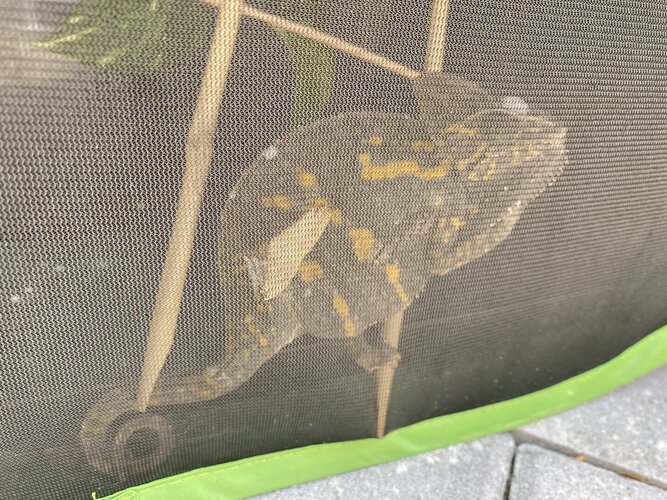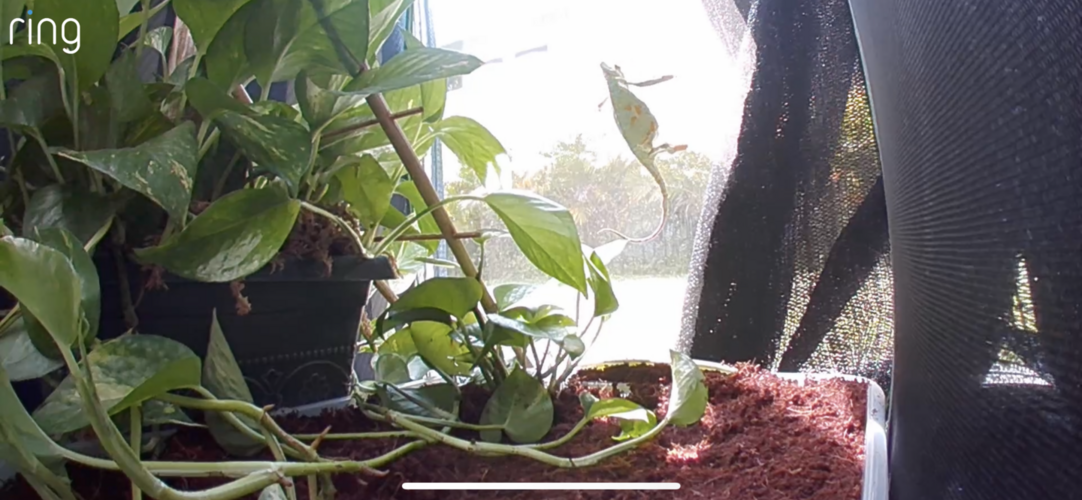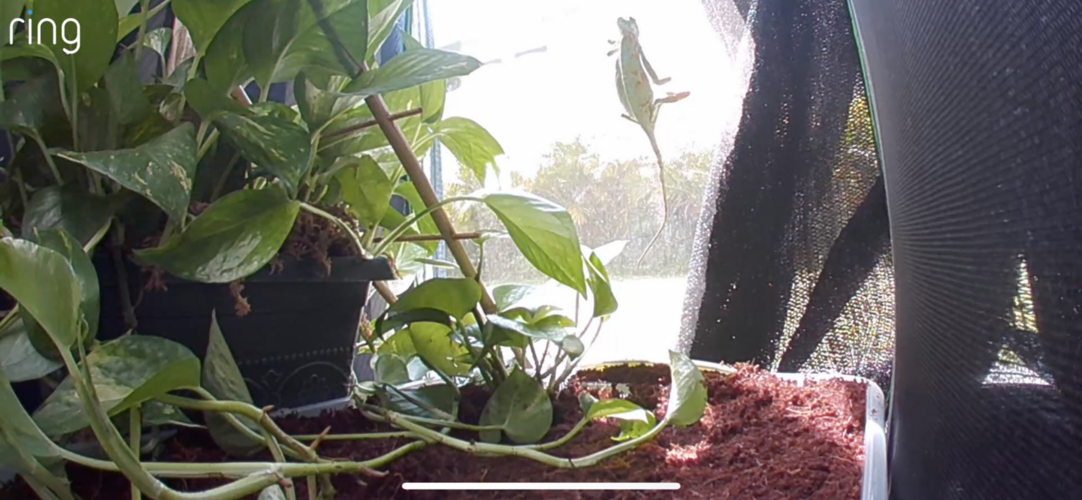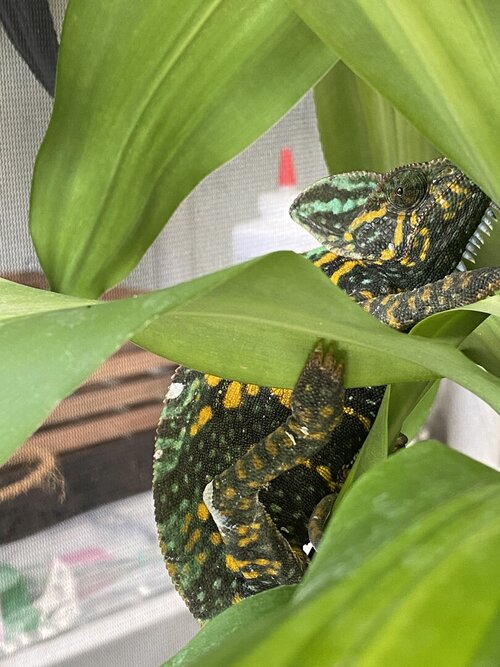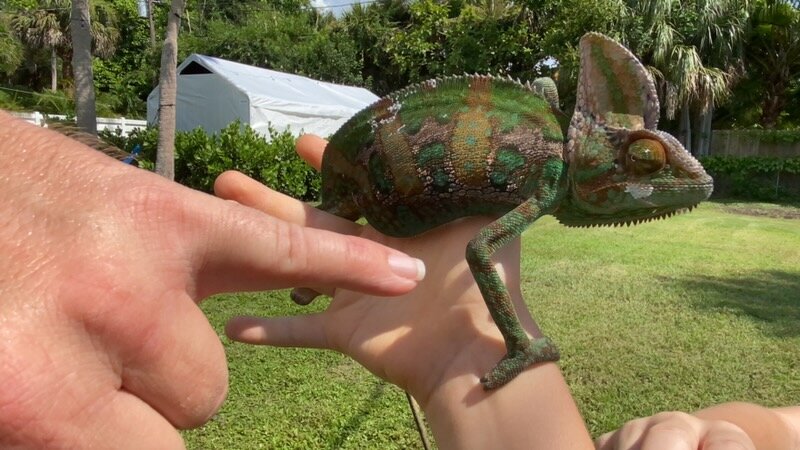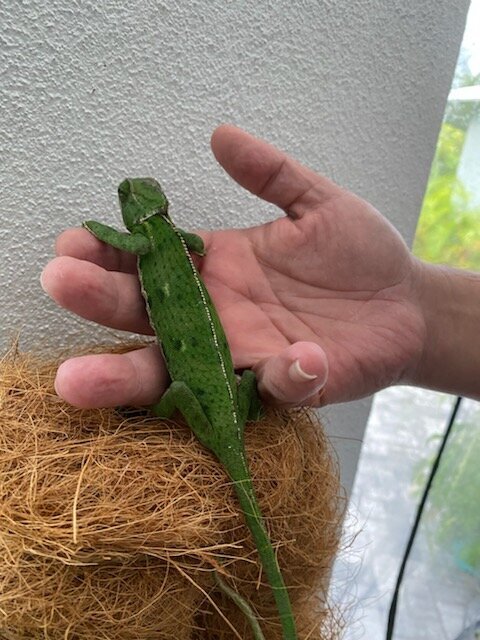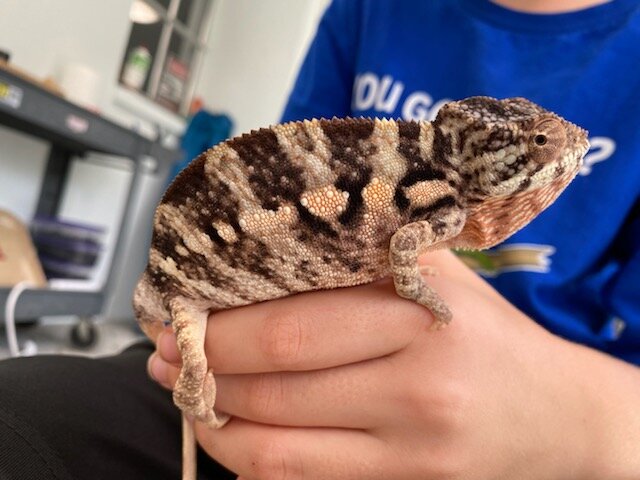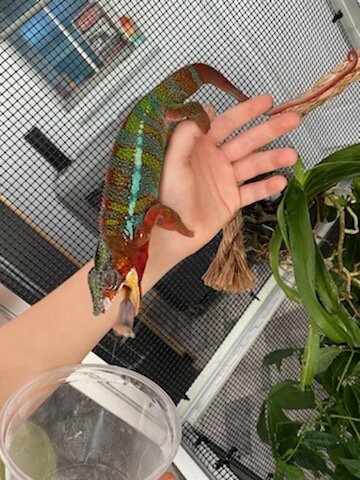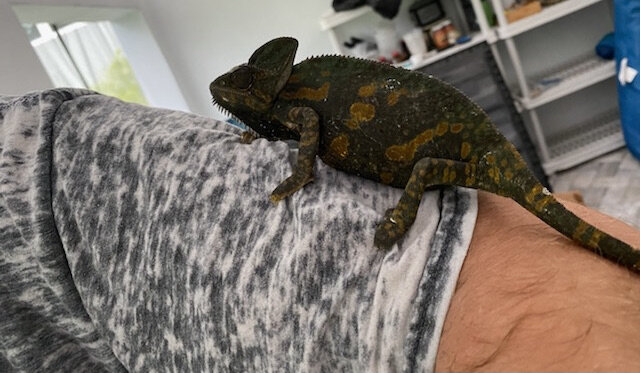VeiledRescuer
Member
Hello all,
First time posting. We rescued a wild veiled on September 13th. (She and another were procured from the Ft Meyers area.
Not new to the Cham world, we have two captive bred panthers. So their supplements are on point. We keep them outside, monitoring the heat of course and provide them with plenty to stay comfy. Crickets are the typical feeding but we also have silk worms we are breeding. Bottom line, her health has improved since being in our possession.
Flash forward to about three or four days ago, my oldest son points out she has spots and not bars, etc. and so we determined she’s not a fat male, but a very gravid female!!!
We immediately prepped a laying bin and placed it in her container. We filled it with cocoa fiber, as that is the only media we had on hand. Will plan for next round to mix with sand, but for the time being that should work.
Long story short, she has dug a bit, and seems rather restless. How do we know if we discovered she was a female in time? Our fear is that she has, or will, become egg bound. I’ve given her her for crickets for the morning not sure if they’re in her container still or not, and have a camera so we can monitor her activity. She seems to be climbing up the side of the netting quite frequently.
(Side note: The container is temporary, we are building her permanent container over the next couple of days where she will have plenty of room and privacy. We plan to move her after she has laid.
Any advice you can provide would be grateful, I’ve attached pictures as best as I could get them to show her condition. She seems otherwise healthy I just hope we got the laying been in there in time. We’ve covered her so she still gets sun and privacy to lay.
Thank you in advance for any help!
First time posting. We rescued a wild veiled on September 13th. (She and another were procured from the Ft Meyers area.
Not new to the Cham world, we have two captive bred panthers. So their supplements are on point. We keep them outside, monitoring the heat of course and provide them with plenty to stay comfy. Crickets are the typical feeding but we also have silk worms we are breeding. Bottom line, her health has improved since being in our possession.
Flash forward to about three or four days ago, my oldest son points out she has spots and not bars, etc. and so we determined she’s not a fat male, but a very gravid female!!!
We immediately prepped a laying bin and placed it in her container. We filled it with cocoa fiber, as that is the only media we had on hand. Will plan for next round to mix with sand, but for the time being that should work.
Long story short, she has dug a bit, and seems rather restless. How do we know if we discovered she was a female in time? Our fear is that she has, or will, become egg bound. I’ve given her her for crickets for the morning not sure if they’re in her container still or not, and have a camera so we can monitor her activity. She seems to be climbing up the side of the netting quite frequently.
(Side note: The container is temporary, we are building her permanent container over the next couple of days where she will have plenty of room and privacy. We plan to move her after she has laid.
Any advice you can provide would be grateful, I’ve attached pictures as best as I could get them to show her condition. She seems otherwise healthy I just hope we got the laying been in there in time. We’ve covered her so she still gets sun and privacy to lay.
Thank you in advance for any help!

